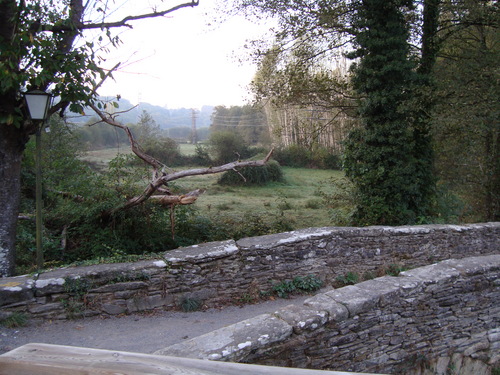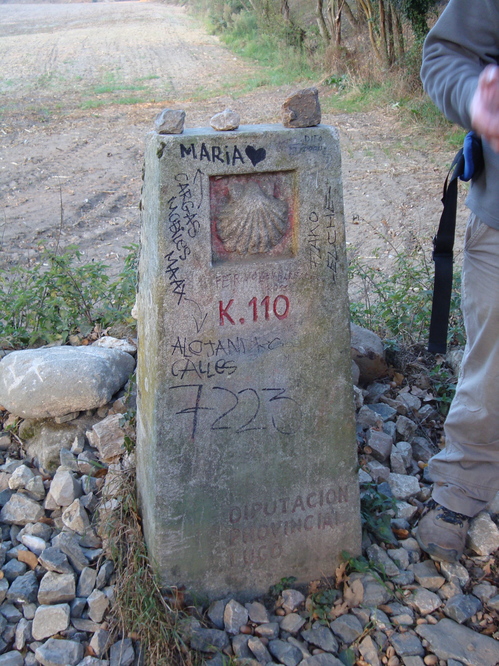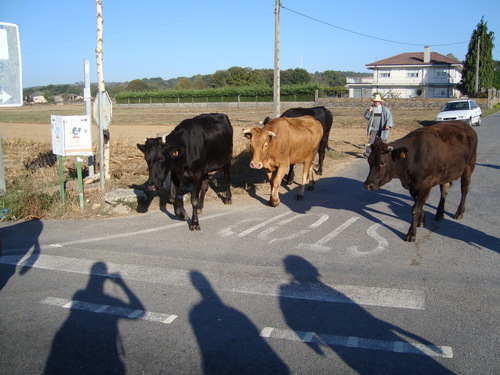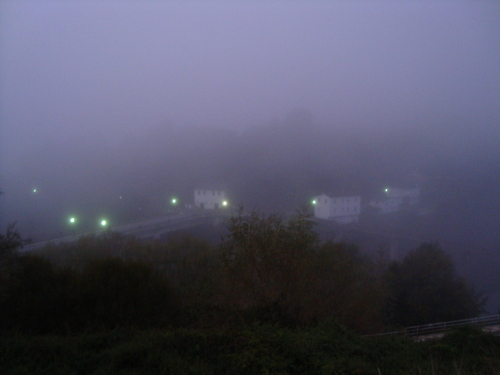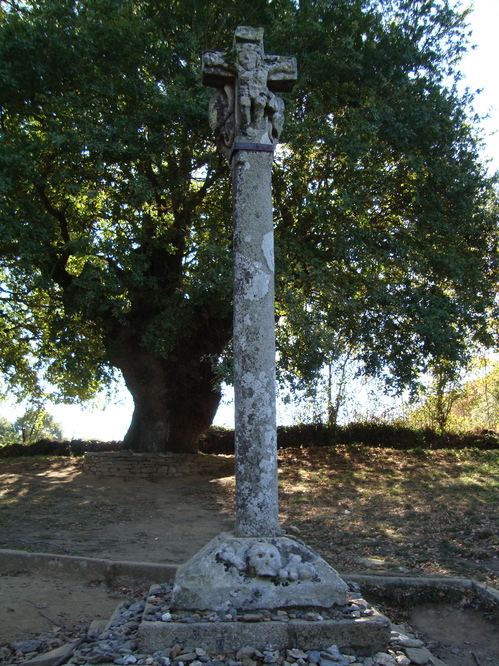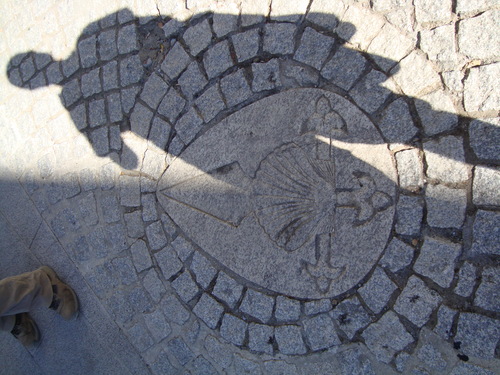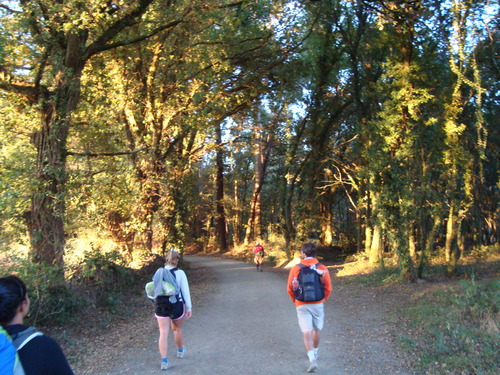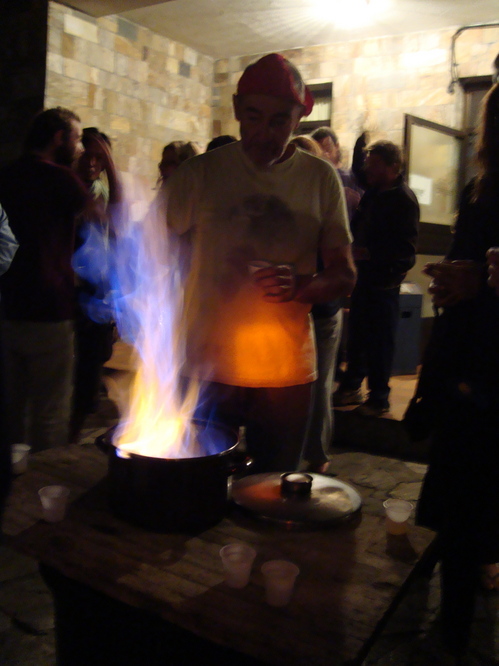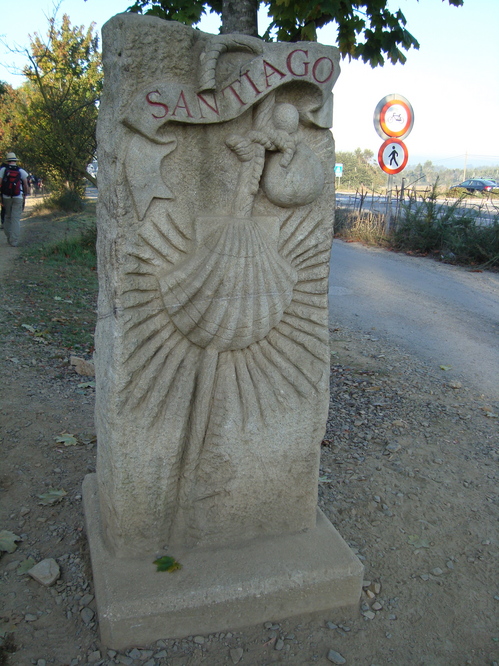Hello again!
As I’ve mentioned in my past couple of entries, I spent my fall break doing a historic Christian pilgrimage called “El Camino de Santiago” (the way of Saint James). Officially it is an 800km route starting on the French side of the Pyrenees Mountains and ending in Santiago de la Compostela in northwest Spain. As the story goes, Saint James was beheaded, and his followers collected his remains and sent them off in a boat somewhere in the eastern Mediterranean. The boat, under its own power and divine guidance, made its way out of the Mediterranean and around Spain, landing on Spain’s northwest coast. After that Saint James’ remains were lost, until about a thousand years ago when they were supposedly found in a town called Compostela. After that, a cathedral was built, the pilgrimage started, and the city’s name changed to Santiago de la Compostela. As it stands today, that cathedral is the second most important church in the world and the pilgrimage is one of the 3 important ones for Christians (the other two are to Jerusalem and the Vatican).
While its roots lie in Christian history and tradition, it has evolved into something much bigger than that – it is a cultural, personal, spiritual, challenging/rewarding, and above all fun experience. Thousands of people a year from all over the world walk El Camino de Santiago for religious and other reasons, each person getting something different out of the experience. While the official route is 800km, you can start at any number of different places to make the journey shorter or longer, with the shortest distance being 100km to officially complete the pilgrimage and receive “la Compostela,”an official church document recognizing your accomplishment.
I did my Camino with a small group of students from my program and a guide, starting from a town called Sarria. As we only had a a little over a week off from classes, we did a relatively short Camino of ~110 kilometers (~70 miles). We walked that distance in 5 days, spending 2 days in Santiago after finishing and one day on each end of the trip for traveling. Our entire hike took place in the most northwest region of Spain called Galicia, which has a very strong Celtic influence and is a completely different environment than Alicante. Alicante is very dry, almost desert-like, and is a beach/port city. Galicia reminded me a lot of Pennsylvania actually, with a lot of forests, farms, some hills and mountains, and streams. The cultures are also very distinct – in Galicia they even speak a different version of Spanish, Gallego.
After all of that setup, it’s time to get to my actual experience on the Camino. Looking back, I can honestly say it was one of the best weeks of my life. I packed up my backpack with the bare essentials to survive for a week, and spent those 7 days walking with our guide, Alfonso (who is pretty much incredible – he knows just about everything, is athletic, and is just a great guy), and 9 other students, who I got to know a lot better. Everyone got along well, so if I wanted to walk alone and think, I could; and if I wanted company, I had good friends to hang out with.
The days hiking pretty much went like this:
1. Wake up at 7am, breakfast at 7.30, walking around 8.
2. Walk 20-25km from 8 until around 2pm.
3. Arrive at “albergue” (basically hostels for pilgrims – they had big bedrooms full of bunk-beds and public bathrooms and kitchens), drop off our backpacks (always felt amazing), and go eat.
4. LUNCH! All along the route are small towns and restaurants/cafes/bars that had “El Menu del Peregrino” (pilgrim menu), consisting of two big, different plates of food, dessert, bread, and a drink for 9€ (actually a really good price for the quality/quantity of food we were getting).
5. Shower and relaxing, usually spent relaxing, reflecting/writing in journals, napping, listening to music, or playing cards.
6. Cultural visit to local church or monument around 8, and then dinner at 9 – similar menu as lunch.
7. Bed between 10 and 11 at the very latest, as the albergues were public and you would upset other pilgrims if you were noisy getting into bed late.
The 5 days I spent walking through the beautiful Galician countryside were incredible. Before going on the Camino I was fairly stressed and kinda bummed out, but I was definitely recharged afterwards. Thankfully I didn’t have any blister/injury problems along the way, but other people in my group did and I felt really bad for them. We had lots of interesting little things happen along the way, like getting into an argument with an albergue boss because we didn’t all have our passports, angering an Italian man by turning on the lights at 7.15am (they’re supposed to get turned on at 7), eating octupus at a famous octopus restaurant, meeting people from the around the world, and celebrating everyone (at the albergue)’s last night before reaching Santiago with music, song, and a special alcohol called “quemada” made by mixing very strong alcohol with bits of fruit and burning it before drinking.
Here are some assorted pictures from the walking part of the Camino (sorry there’s been so much text and no pictures thus far):
¡Hasta pronto!
Location: Santiago de Compostela, Spain
Loading map...



